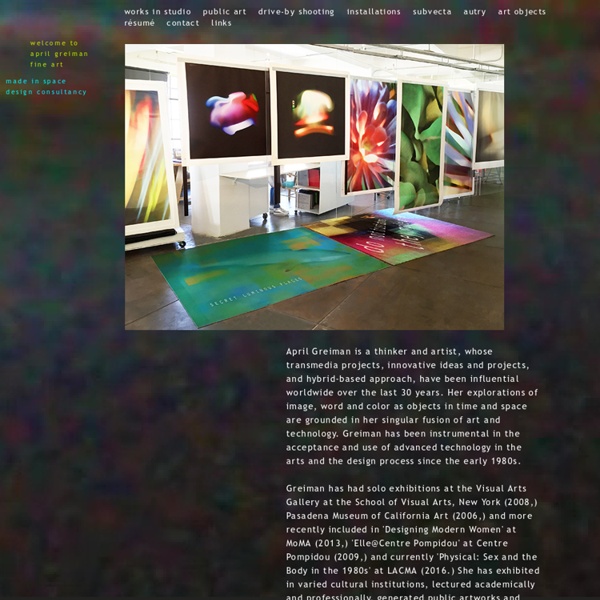



Graphic Thought Facility Fanette Mellier Design You Trust. Design, Culture & Society. armin hofmann | l’école de bâle Il y a longtemps que j'ai entrepris une réflexion sur la pédagogie du design graphic et de la manière d'adapter les principes fondateurs de cette pédagogie à l'environnement numérique et interactif dans lequel les étudiants du monde entier sont plongés depuis une dizaine d'années. C'est un débat que je souhaite entamer avec les professionnels et les enseignants parce qu'à l'heure des futurs clics d'or il est plus qu'important de baliser les fondamentaux qui régissent la qualité de la création. Je voulais par la même occasion signaler le travail assez phénoménal qu'à réalisé un enseignant de l'école supérieur d'art appliqués de Bourgogne, Thierry Chancogne dont vous pouvez télécharger à l'adresse ici, l'intégralité de son cours au format pdf. Une somme qui a le mérite de balayer très large tous les champs d'investigations connus à ce jour dans le périmètre de la pédagogie des arts appliqués, et surtout de la communication. Concernant les lignes :
Studio Mathieu Meyer Lovely Package | Curating the very best packaging design Atelier Cédric Gatillon deValence Adrian Frutiger Information about the typeface designer Adrian Frutiger and his fonts. Adrian Frutiger was born in 1928 at Unterseen near Interlaken, Switzerland. After an apprenticeship as a compositor, he continued his training in type and graphics at the Zurich School of Arts and Crafts (Kunstgewerbeschule) from 1949 to 1951, being taught by two renowned professors, Alfred Willimann and Walter Käch. Frutiger went to Paris in 1952 and worked as typeface designer and artistic manager at Deberny & Peignot. His first typeface creations were Phoebus (1953), Ondine (1954) and Meridien (1955), and through the foundry's connections with Photon/Lumitype Frutiger created some of the earliest typefaces for photocomposition. He established his international position as a typeface designer with his Univers sans-serif font, produced for metal and film in 1957. In addition to his typeface design, Frutiger has been a consultant to IBM and the Stempel typefoundry. (Photograph reproduced courtesy of fontblog.de.)
Vincent Perrottet Frost* Design